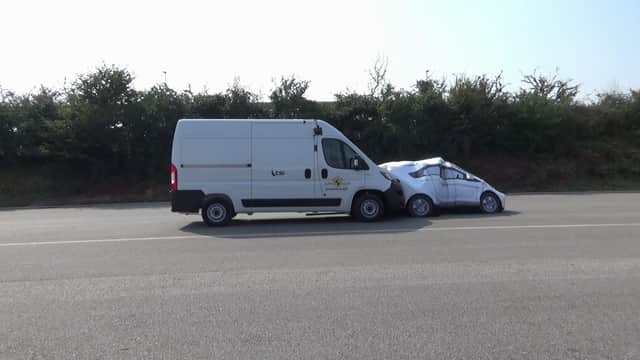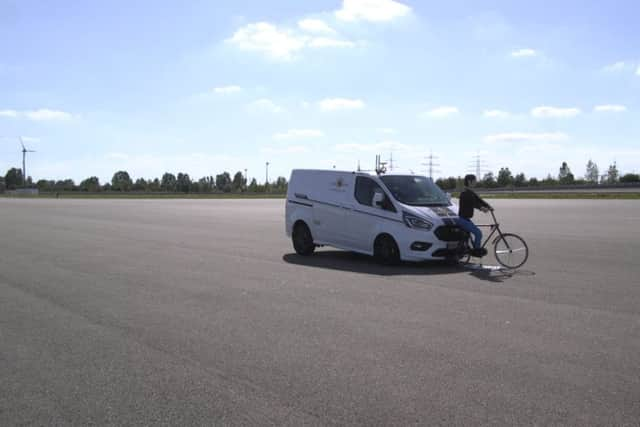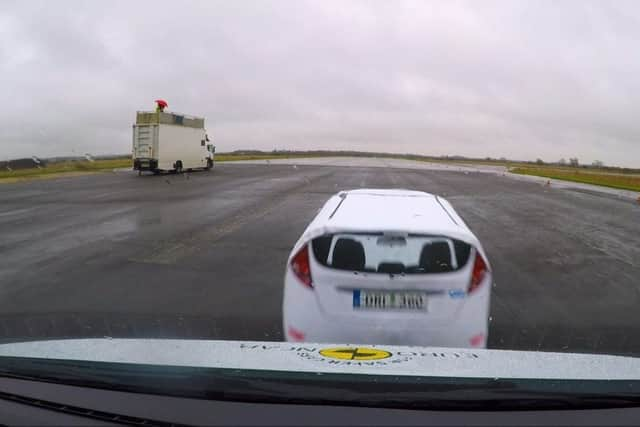Van safety gap ‘putting lives at risk’ as buyers told to avoid 1 in 4 models


A lack of modern safety equipment on new vans is putting the lives of their drivers and other road users at risk, according to new tests.
As vans take to our roads in ever increasing numbers, a new safety assessment has identified a huge gap in active safety systems that leaves vans lagging well behind passenger cars.
Advertisement
Hide AdAdvertisement
Hide AdVans are involved in more fatal accidents per mile travelled than any other type of vehicle on the UK’s roads. Car occupants are 40 per cent more likely to be killed or seriously injured when involved in a head-on incident with a van compared to another car and in the five years up to 2018, collisions involving vans were responsible for a 14 per cent increase in the number of serious injuries to pedestrians, car occupants, and van occupants. Cyclist casualties also rose by 22 per cent.
Yet testing by Euro NCAP and Thatcham Research found less than 13 per cent of new vans feature autonomous emergency braking (AEB) - a system that can help avoid or reduce the impact of a collision. In contrast, the technology is fitted to 62 per cent of new cars.


Nineteen vans were tested for the first Commercial Van Safety Rating. Only three achieved the top “gold” rating while five performed so poorly they were given a “not recommended” rating.
The Volkswagen Transporter, Ford Transit and Mercedes-Benz’s Vito, all of which feature AEB as standard, scored a gold rating, while the Renault Master, Nissan NV400, Renault Trafic, Vauxhall Movano and Fiat Talento all performed so badly that they were classed as not recommended. Five other vans were rated “silver” and another six “bronze”.
Matthew Avery, director of research at Thatcham Research, said: “This first batch of test results show the fitment of crucial safety technology on vans in woefully low.
“It’s a serious issue that needs addressing urgently, particularly with van numbers increasing and the continued surge in demand for home deliveries during the pandemic and before Christmas.”


Four million vans are already in use around the UK and that number is rising as more people rely on home delivery services, particularly in the wake of the Covid-19 pandemic and lockdown. One leading delivery firm expects its deliveries to increase 23 per cent in 2020.
Avery added: “There is a definite lack of parity between the levels of collision avoidance technology on vans compared to cars.
Advertisement
Hide AdAdvertisement
Hide Ad“Modern cars have lots as standard, but vans have barely any. Brands are making a clear decision not to fit this important technology as standard and van operators are not even buying it as a cost option.
“The lack of parity even exists within the same manufacturers. Take Renault, for example. Its five-star-rated Clio has lots of standard fit Advanced Driver Assistance System (ADAS) technology that can save lives. But its Trafic van has practically nothing, not even as an option.
“We want to see more collision avoidance technology fitted as standard and readily available long before then.
“Decisive action will reduce van collisions, create greater parity between cars and vans, and help to protect the public from serious injury and death as more vehicles on our roads will have lifesaving technology.”
